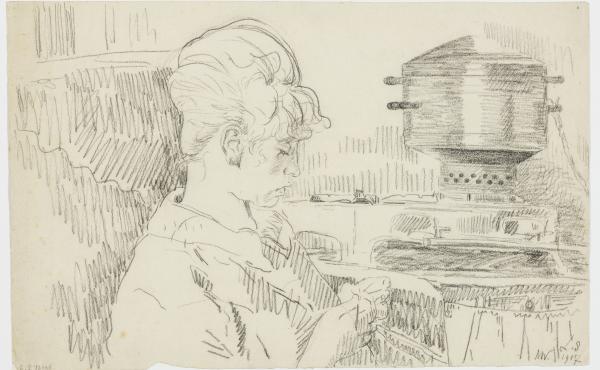Rachel Vergison was born in Ostend on 31 May 1893, the daughter of cabinetmaker François Vergison and Melanie Deurwaerder.1 She married Léon Spilliaert on 23 December 1916, aged 23.
From then on, Léon had a real woman to portray on paper for the first time, without the preconceptions that had crept into his earlier images of women.2 The couple did not really marry for love, and moreover the marriage was against the wishes of father Léonard.3
The artist and his bride, twelve years younger than him, mainly sought stability and married because that’s just what people did. Their very different characters and interests sometimes meant that tensions ran rather high.4 During the war, for example, Spilliaert would rather spend money on art materials than on much-needed food.5 Rachel was more down to earth and felt that her husband did not put enough effort into selling his work.6 Shortly after their marriage, Rachel became pregnant, forcing Spilliaert to shelve his plan to join the pacifists in Switzerland. The couple finally settled in Sint-Jans-Molenbeek in May 1917.7 Their daughter Madeleine was born on 15 November 1917, the same month in which Rachel’s mother Melanie died; her father lived until 1929.8 Over the next few years, Spilliaert often captured Rachel on paper during her daily routine: sewing, writing letters, putting her make-up on or taking care of Madeleine.9 He also looked after his wife. When she fell ill in 1931, Spilliaert - although he was not known to be religious - took her from Ostend to visit the relics of St Godelieve in neighbouring Gistel.10
After the Second World War and the death of her husband in 1946, Rachel moved in with her daughter Madeleine who was divorced, leaving her a single mother with three children. Together with Madeleine, she authenticated unsigned Spilliaert works and managed a collection of 300 works bequeathed to them by the artist.11 Several museums and institutions purchased works from her, further contributing to her husband’s reputation.

